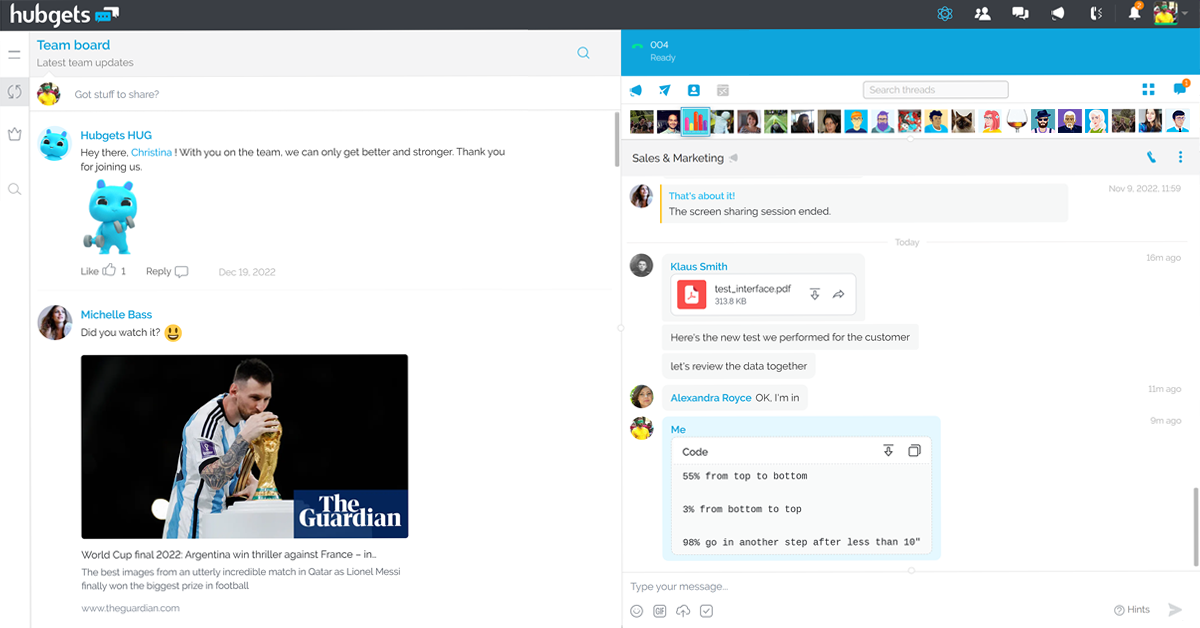The modern business environment is driven by meetings. According to this 2021 Productivity Trends Report, the average business professional spends 21.5 hours in meetings each week. Meanwhile, a busy professional spends almost 33 hours in meetings, weekly. Companies are constantly looking for ideal meeting times in order to increase productivity. And what about the meeting format? If you are looking to reclaim time and increase meeting productivity, consider audio conferences. Here are a few reasons why this is the best option to run your business and keep your team members engaged.

Audio conferences reduce wasted time
In-person meetings take time away from the workday on a macro and micro scale. On a macro level, when scheduling in-person meetings with different clients or team members in different locations, you need to account for travel time to and from these locations. If your employees need to travel, then you need to pay for gas, food, accommodations, and other expenses.
In-person meetings can also waste time on a micro level. You lose time and productivity even when teams in the same building meet in person. They have to pack up their laptops, walk across the office to the right room, and get settled into the meeting. This can take 5 to 15 minutes depending on the meeting and employee.
This process also repeats in reverse when the meeting is over and everybody returns to their desks. With an audio conference, an employee only loses a few seconds transitioning from their work to the call by dialing in.
Hybrid workplaces ❤ audio conferences
Hybrid work is frequently lauded as the work model of the future. However, it can be confusing and exhausting at times. Some companies have stricter rules when employees can work remotely versus in the office, which can make it even more challenging to schedule meetings.
So, instead of scheduling in-person meetings when everyone is in the office, audio conferencing allows teams to meet whenever and wherever they are. It’s okay if three team members are in the office while others are working from home. Everybody can join the audio call and enjoy the same experience.
Your “camera-on” policy stresses out employees
Throughout the pandemic, many companies switched to video conferencing instead of in-person meetings. While this option allowed people to see each other’s faces, it also put a lot of pressure. When companies required employees to turn their cameras on for each call, people became stressed out.
Some people even suffered from a condition called Zoom dysmorphia. They became so preoccupied with their appearance during the video call that they started experiencing anxiety, distraction or avoid logging on altogether.
Employees report feeling more exhausted after video calls compared to audio calls. Unfortunately, they also spend more time trying to look engaged than actually listening to the call. Video conferencing quality also varies significantly based on environmental factors like room lighting, background, clothing etc.
With audio conferencing, employees can turn their focus back on the content of the call. They are no longer concerned about how they look or who is watching them at any given time.
Participants will better retain meeting information
When your employees aren’t worried about being presentable on camera, they can focus on the information being shared. What’s more, an audio conference appeals to auditory learners, who make up 30 percent of the population. Additionally, the visual aids that you send with the meeting appeal to 65 percent of the population, who are visual learners.

Ahead of the audio conferences, share any relevant materials for the call. These can include a meeting agenda, presentation deck, reports, or any relevant spreadsheet. In Hubgets, we do this in the relevant Topic. All such shared details and files remain available at any time before, during or after the conference call for further review and support.
The ability to access such important information is of tremendous help for all the parties involved. And it will make their work even more productive.
Make it the team standard
It takes more than a clear agenda and respect for employee time to hold effective meetings. They also need to be in a format that makes it easy to process the information.
Audio conferencing is one of the best ways for teams to collaborate. It’s more reliable than in-person meetings as anyone can call in no matter where they are. Far less stressful than video calls, they even help employees retain more information.
With audio conferences done right, you maximize both the overall workplace productivity and your employee engagement.
Post A Reply